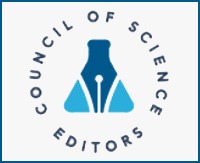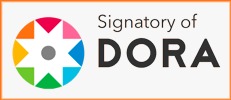Kidneys: uromodulin and hyperuricemia
DOI:
https://doi.org/10.22141/2307-1257.14.1.2025.495Keywords:
chronic kidney disease, kidney ultrasound, uric acid, uromodulinAbstract
Background. Uromodulin (Umod) has a significant impact on the development and course of chronic kidney disease (CKD). For example, a higher Umod level is associated with larger kidney size and estimated glomerular filtration rate (eGFR). Umod excretion is known to be associated with fractional excretions of uric acid, chloride, and sodium (markers of volume overload), but the relationship between Umod and hyperuricemia is not yet fully understood. The purpose of the study: to investigate the relationship between blood uric acid levels and Umod in patients with CKD stage I–III. Materials and methods. A prospective randomized cohort ROLUNT (uROmoduLin, UbiquinoNe, glutaThione) study in which 34 patients with blood uric acid levels greater than 360 μmol/L participated was conducted in 2021–2023. The ROLUNT study was carried out at VETA-PLUS LLC and the Brovary Multidisciplinary Clinical Hospital, which are the clinical bases of the Department of Nephrology and Renal Replacement Therapy of the Shupyk National Healthcare University of Ukraine. Results. The results of Spearman’s correlation showed that there is a significant large positive relationship: between the fractional excretion of Umod (FeUmod) and the risk index for the development of the terminal stage of CKD after 2 (QxMD2) and 5 years (QxMD5); the Charlson Comorbidity Index, blood creatinine (sCrea), blood urea nitrogen (BUN), blood urea (sUrea), low-density lipoprotein (LDL), total cholesterol (sChol), urine Umod (uUmod)/eGFR according to the CKD-EPI formula (eGFRCKD), uUmod/urine creatinine (uCrea), urinary albumin (uAlb)/uCrea; between uAlb/uUmod and uAlb, uAlb/uCrea; between daily uUmod (uUmod24) and uUmod, uUmod/Umod of blood (sUmod), body mass index; between uUmod/sUmod and uUmod, uUmod24; between uUmod/uCrea and uAlb/uCrea, uUmod/eGFRCKD, FeUmod, sChol, LDL, very low density lipoprotein, percentage of adipose tissue, sUrea, BUN, BUN/sCrea, sUrea/sCrea, QxMD2, QxMD5; between uUmod/eGFRCKD and uUmod/uCrea, FeUmod, sUrea, BUN, sCrea, QxMD2, QxMD5. Conclusions. The wide range of effects of uUmod not only on the urinary system makes it an important biomarker in the clinical practice of nephrologists and doctors of other specialties.
Downloads
References


 ISSN
ISSN  ISSN
ISSN 


























